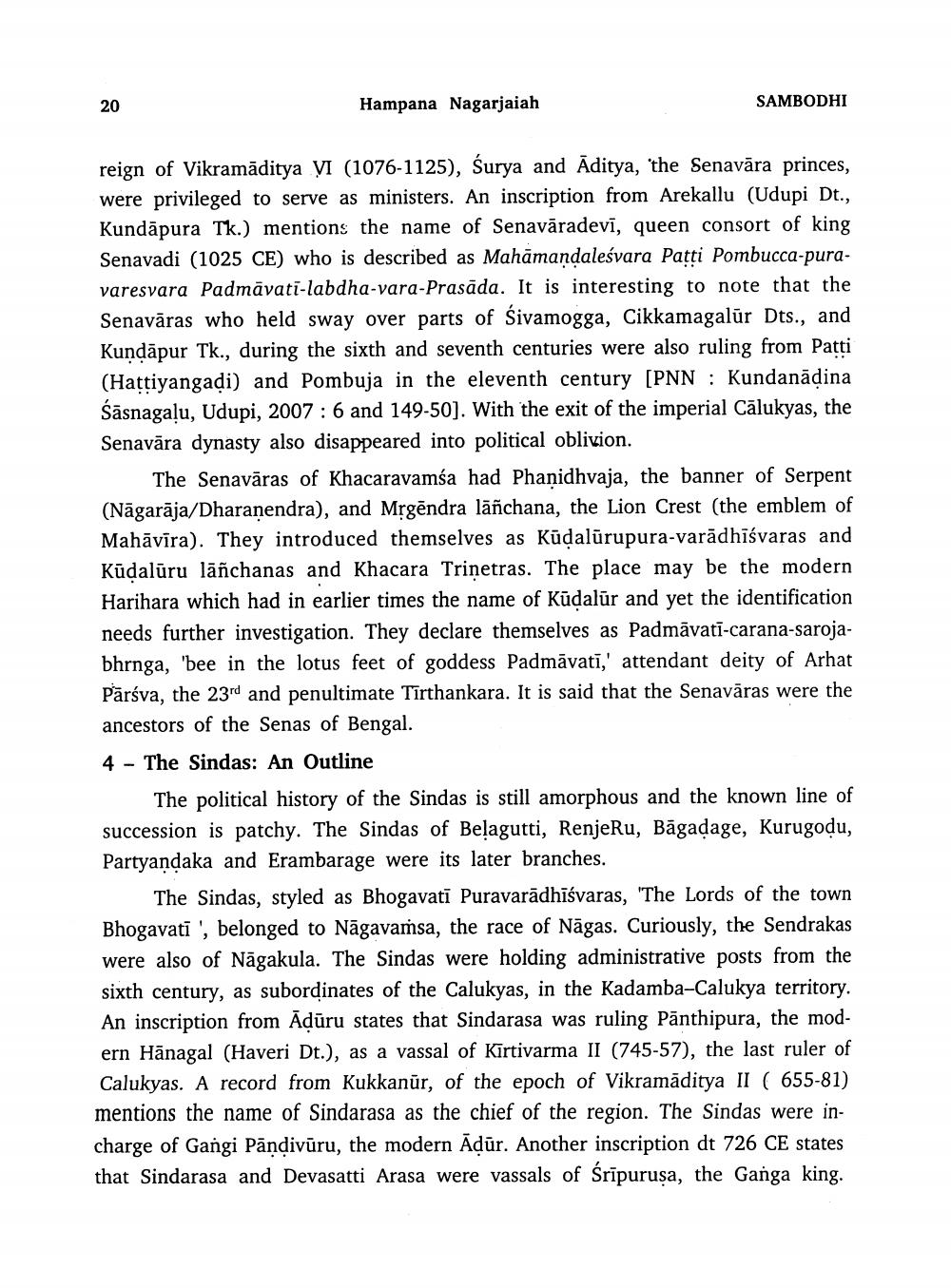________________
Hampana Nagarjaiah
SAMBODHI
reign of Vikramāditya VI (1076-1125), Surya and Aditya, 'the Senavāra princes, were privileged to serve as ministers. An inscription from Arekallu (Udupi Dt., Kundāpura Tk.) mentions the name of Senavāradevī, queen consort of king Senavadi (1025 CE) who is described as Mahāmandalesvara Patti Pombucca-puravaresvara Padmāvati-labdha-vara-Prasāda. It is interesting to note that the Senavāras who held sway over parts of Sivamogga, Cikkamagalur Dts., and Kundāpur Tk., during the sixth and seventh centuries were also ruling from Patti (Hattiyangadi) and Pombuja in the eleventh century [PNN : Kundanādina Śāsnagaļu, Udupi, 2007 : 6 and 149-50]. With the exit of the imperial Cālukyas, the Senavāra dynasty also disappeared into political oblivion.
The Senavāras of Khacaravamsa had Phanidhvaja, the banner of Serpent (Nāgarāja/Dharanendra), and Mrgēndra lāñchana, the Lion Crest (the emblem of Mahāvīra). They introduced themselves as Kūdalūrupura-varādhīśvaras and Kūdalūru lāñchanas and Khacara Trinetras. The place may be the modern Harihara which had in earlier times the name of Kūdalūr and yet the identification needs further investigation. They declare themselves as Padmāvatī-carana-sarojabhrnga, 'bee in the lotus feet of goddess Padmāvatī,' attendant deity of Arhat Pārśva, the 23rd and penultimate Tīrthankara. It is said that the Senavāras were the ancestors of the Senas of Bengal. 4 - The Sindas: An Outline
The political history of the Sindas is still amorphous and the known line of succession is patchy. The Sindas of Belagutti, RenjeRu, Bāgadage, Kurugodu, Partyandaka and Erambarage were its later branches.
The Sindas, styled as Bhogavati Puravarādhīśvaras, "The Lords of the town Bhogavati ', belonged to Nāgavamsa, the race of Nāgas. Curiously, the Sendrakas were also of Nāgakula. The Sindas were holding administrative posts from the sixth century, as subordinates of the Calukyas, in the Kadamba-Calukya territory. An inscription from Ādūru states that Sindarasa was ruling Pānthipura, the modern Hānagal (Haveri Dt.), as a vassal of Kirtivarma II (745-57), the last ruler of Calukyas. A record from Kukkanūr, of the epoch of Vikramāditya II ( 655-81) mentions the name of Sindarasa as the chief of the region. The Sindas were incharge of Gangi Pāndivūru, the modern Ādūr. Another inscription dt 726 CE states that Sindarasa and Devasatti Arasa were vassals of Śrīpurusa, the Ganga king.




